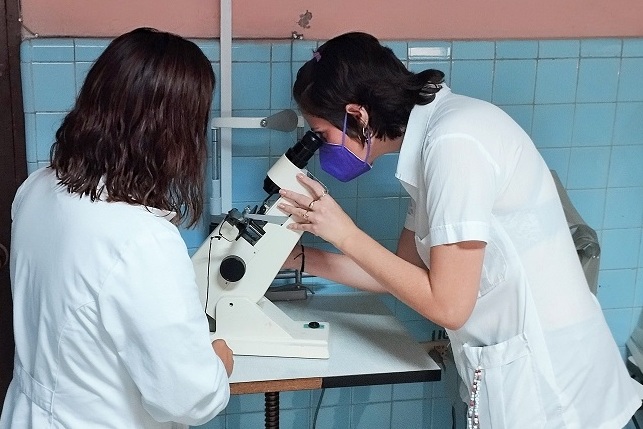An interesting case of orbital cellulitis in a two-year-old patient supports the work presented by Dr. Maykel Pérez Veranes at the 2nd Provincial Conference on Pediatric Ophthalmology and Strabismus, which will be attended by 60 representatives from chapters and related experts, among whom Includes: Goals to ensure comprehensive care for the pediatric age group.
The investigation was carried out at the José Luis Miranda University Pediatric Hospital after referral from the Basic Polyclinic, considering the infection of the tissues within the orbit and around and behind the eyes.
«The mother noticed a reddish tint on the little boy’s eyelids. After admission, significant inflammation developed within a short period of time, and after ruling out several hypotheses, the diagnosis was made. ” said Dr. Pérez Veranes, a pediatric ophthalmologist and deputy chief of surgery at Children’s Hospital.
After several surgeries, it was determined that there was a neoplastic hematological disease, which is uncommon in minors, and in this case also occupied the maxillofacial sinuses. The child underwent surgery, progressed well on the oncology-hematology service, and integrated into social life.

Dr. Maykel Pérez explained that the central theme of the event is amblyopia, commonly known as “lazy eye,” and that one day of the month is dedicated to amblyopia and low vision.
“This can lead to poor vision in one eye due to a malfunction between the brain and the eye.”
The program also covers retinal diseases and strabismus, refractive disorders or refractive errors associated with amblyopia, which causes a range of irregularities in the visual pathways, and other conditions common in childhood.
Due to the longer follow-up time, more complex conditions such as strabismus, which appear several months after birth and require continued observation, can also occur. Depending on its type, it can be performed as early as 18 months or five years after birth, depending on the particularities of the case.
“Another rare but complex condition is tumors such as retinoblastoma and Coats’ disease, which are characterized by abnormal unilateral development of retinal blood vessels, one of which was operated on in the center,” commented the doctor.
Pérez Veranes agrees that the main reasons for the increase in retinopathy of prematurity (ROP) in recent years are low birth weight and low gestational age before delivery.
The Mariana Grajales Gynecological Hospital in Villa Clara has an ophthalmologist who is responsible for examining the newborn and deciding on the actions to be taken in this situation, thanks to the multidisciplinary team that has intervened in the fourth case in recent months .

For Dr. Maykel Pérez, family involvement is crucial when abnormalities in vision are detected. Overuse of screens, addiction to cell phones, tablets and other technology is leading to an increase in myopia.
“Sometimes, due to responsibilities or lack of time, the child does not receive prompt counseling, which can lead to a late prognosis. Additionally, the family unit can contribute to the effectiveness of treatment, as in this case with the development of strabismus. Advances in Science.
In addition to this, teacher observation plays an important role when certain irregular postures or learning failures are noticed that warrant close attention.

